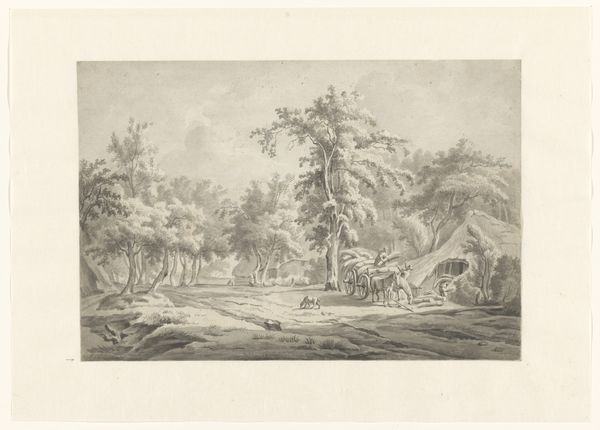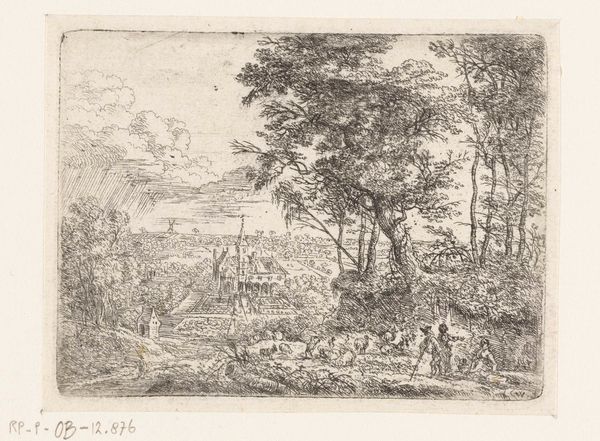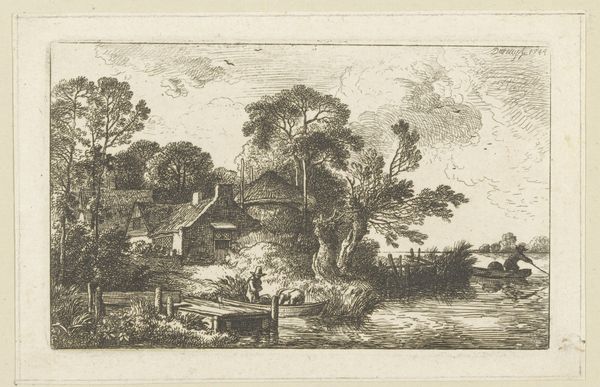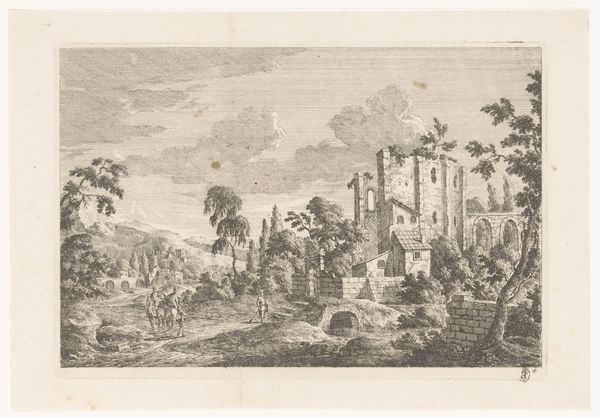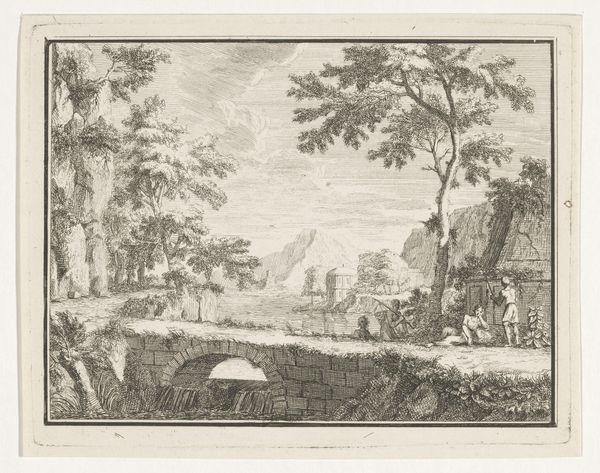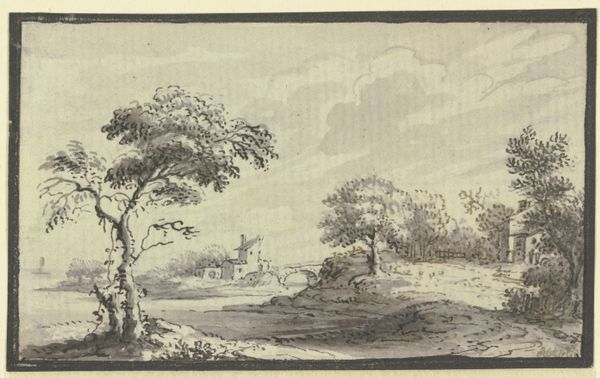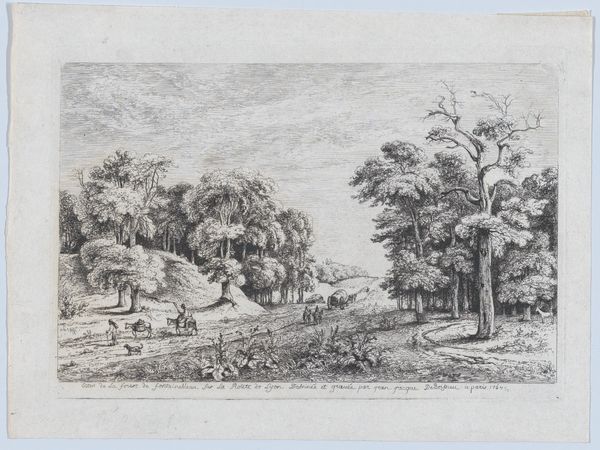
Landschap met houten brug naar een boerderij en twee figuren bij een waterput 1739 - 1804
0:00
0:00
etching
#
etching
#
landscape
#
etching
#
genre-painting
Dimensions: height 78 mm, width 120 mm
Copyright: Rijks Museum: Open Domain
Curator: Welcome. Before us we have "Landschap met houten brug naar een boerderij en twee figuren bij een waterput", or "Landscape with wooden bridge to a farm and two figures at a water well," a work created between 1739 and 1804, by Johann Andreas Benjamin Nothnagel. It’s an etching, exhibiting Nothnagel's talent for detailed miniature scenes. Editor: My immediate reaction is one of tranquility. There's a distinct old-world charm to the composition; the figures feel frozen in a simpler time, focused on the essential tasks of rural life. Curator: Exactly. Nothnagel was working during a period of great social and political upheaval. Thinkers were questioning hierarchies, laying the foundation for revolutions. Landscapes like this often romanticized the rural as a refuge. How might this resonate within evolving societal values surrounding labor, social order, and progress? Editor: I see a continuity between these rustic symbols and our own longings for an idyllic past. The wellspring itself--a clear symbol of sustenance and community. Water is life, and to share a well is to share in the cycle of that sustenance. It resonates even now. Curator: The farm nestled atop the small rise adds to this sense of self-contained community. Considering that these kinds of landscapes were often commissioned by or sold to the rising merchant class, it's hard not to read them as projecting desires onto an idealized version of the countryside. It brings up interesting questions about power and representation. Who benefits from this idyllic imagery? What might be missing or suppressed? Editor: True, but the simplicity of the rendering reinforces the idea that beauty is to be found in everyday moments. Perhaps, on a psychological level, it connects with archetypes that are deeply ingrained. The tree, for example, evokes concepts of growth and connection with roots extending beyond our vision into both present and past, or with branches to a brighter future. Curator: And don't forget about that precarious-looking bridge. A metaphor, perhaps, for the fragile connections between the land and its inhabitants, or even a reflection on the growing urban-rural divide. The figures become emblematic of certain social strata and raise vital questions about agency and historical context. Editor: That image of connection also has emotional weight. In the most basic way, it demonstrates how even the simplest etching carries profound psychological depth. Thank you, this little vignette opens up more considerations that first meet the eye.
Comments
No comments
Be the first to comment and join the conversation on the ultimate creative platform.

